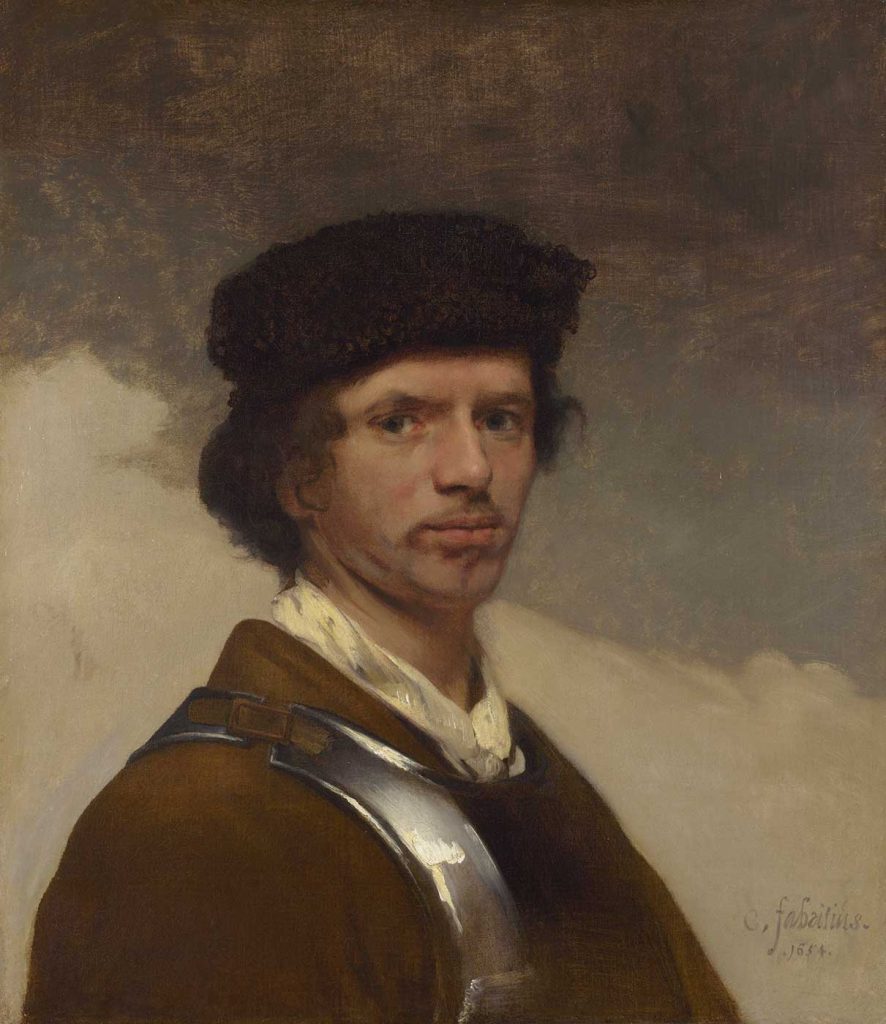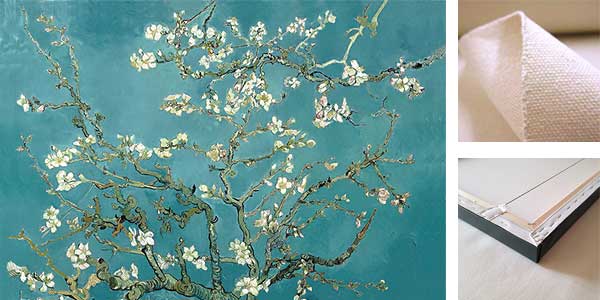
Young Man in a Fur Cap (probably a Self Portrait) by Carel Fabritius was created in 1654. The painting is in National Gallery, London. The size of the work is 70,5 x 61,5 cm and is made of oil on canvas.
About the Work
This portrait is one of Carel Fabritius’s final works, made in the last year of his short life – he died aged just 32. He was apprenticed to Rembrandt in Amsterdam between 1641 and 1643 and is generally considered one of his most talented pupils, but only about a dozen of his paintings survive.
Although it is impossible to be sure – no documented likeness of Fabritius exists – it is almost certainly a self portrait. The intensity of the gaze and the posture are reminiscent of a series of earlier self portraits made by Rembrandt and his other pupils. The costume he wears, including a soldier’s breastplate, also fits in with this tradition: Rembrandt, for example, painted himself as a soldier in the 1630s.
One intriguing aspect is the hat. The title, which would have been given to the painting long after it was made, describes it as fur, but the curls depicted in the rather obscure paintwork make it look more like wool. It’s possible that it had flaps which came down around the ears and neck – a type of hat worn by sailors, and possibly soldiers – but it is too ill-defined to be sure. Read more in National Gallery, London.
About the Artist
Carel Pietersz. Fabritius (27 February 1622 – 12 October 1654) was a Dutch painter. He was a pupil of Rembrandt and worked in his studio in Amsterdam. Fabritius, who was a member of the Delft School, developed his own artistic style and experimented with perspective and lighting. Among his works are A View of Delft (1652; National Gallery, London), The Goldfinch (1654), and The Sentry (1654).
Carel Pietersz. Fabritius was born in February 1622 in Middenbeemster, a village in the ten-year-old Beemster polder in the Dutch Republic, and was baptized on 27 February of that year. He was the son of Pieter Carelsz., a painter and schoolteacher,[citation needed] and he had two younger brothers, Barent and Johannes, who also became painters. Read more in Wikipedia
Order a reproduction of this work (printed on canvas)
